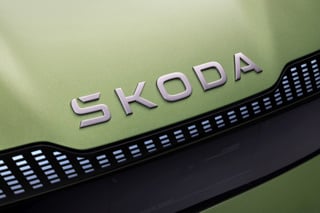The past few years have been tough for Renault’s operation in the UK.
Its market share is now less than half the 7.6% peak of 2002. In 2011, 50% of its 190-strong retail network was operating at a loss.
Also, the national sales company has been unprofitable since 2007.
It took the current lengthy recession to ensure action was finally taken to pull the UK operation into line with the smaller business being achieved.
Renault bravely pared its model range back to its popular, profitable small and medium cars and pulled the uncompetitive Laguna, Espace, Kangoo and Modus off the market.
It terminated one-third of its sales points to ensure volume throughput and profitability will improve for those that remain.
So it’s unfortunate that Renault HQ hasn’t put the brakes on its executive merry-go-round. Just as Renault UK managing director Thierry Sybord was halfway into his plan to renew both the brand’s and the franchise’s fortunes in the UK, his bosses in France called him across to do similar on the European mainland.
And the UK franchisees, fired up by Sybord’s business evolution plan, now have to put their trust in another fresh face.
This month former Nissan Latin America boss Ken Ramirez became the fourth managing director of Renault UK in a decade.
He takes over in a crucial year, one in which Renault must start to claw back sales from the likes of Ford, Hyundai and even its alliance partner Nissan.
The tools to help it do so are the new Clio supermini, launching in March and expected to win more than 25,000 sales, and the Captur compact crossover SUV due in early summer.
Equally importantly, its bargain-priced sub-brand Dacia has just begun trading.
With a Duster SUV, Sandero Stepway crossover and Sandero small family hatchback, it is focused on the most popular segments and looks well positioned to capture the budget-focused customers that once would have bought a Kia, a Mitsubishi or a Skoda, but can no longer afford to.
The UK is the last European market to get Dacia, which has been a huge success across the continent.
Before his departure, Sybord told AM he was fully confident that Dacia would succeed here.
More than 2,000 pre-orders had already been taken by the start of 2013.
Volume aspirations for 2013 are around 20,000 units; Sybord said Dacia has a ‘pull’ business model to bring in customers, with dealers earning a relatively small margin and no volume bonus.
This is aimed to negate dealers discounting and pushing the cars into the market.
So with six new models coming in the first half of 2013, Renault UK’s franchised network has a right to feel excited.
A further critical aspect Sybord was keen to tackle in 2013 was Renault’s customer experience. In recognition that the customer now visits a dealership almost ready to buy, a programme to make improvements was begun in 2012 in agreement between Renault and its dealer association.
Mystery shopping is being used to monitor the customer experience and identify aspects for improvement.
“If we have the right products, right price, but don’t have the right service we will lose the sale,” said Sybord.
Notwithstanding the changes implemented last year, Renault UK’s renewal will be a long journey. Its new launches are good products and well positioned for a period of austerity, backed up by Renault’s Four Plus package of warranty, service, roadside assistance and finance.
Dealer profitability is improving – in 2012 the network achieved breakeven.
However its competition remains strong and there are many lost customers to convince of the reasons to return.





















Login to comment
Comments
No comments have been made yet.